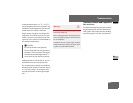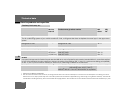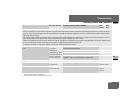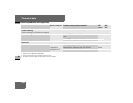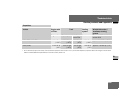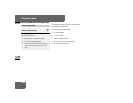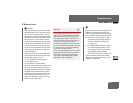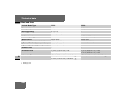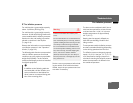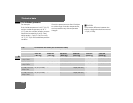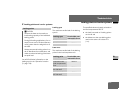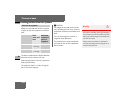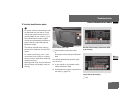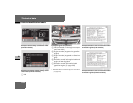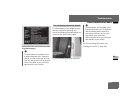
369
*Technical data
Tire inflation pressure
6
̄ Tire inflation pressure
For vehicles with a gross weight capacity
above 10,000 lbs (4500 kg) only.
For vehicles with a gross weight capacity
less than 10,000 lbs (4500 kg) observe the
recommended cold tire inflation pressures
listed on the tire and loading information
placard on the driver’s door B-pillar
(୴ page 210).
Observe the information on recommended
tyre inflation pressure in the “Operation”
section (୴ page 210).
The following table lists the recommended
cold tire inflation pressures for all load
conditions up to the maximum permissible
weight limits (GAWR). The tire inflation
pressures listed apply to the tires installed
as original equipment.
Set the correct tyre pressure before load-
ing the vehicle. If the vehicle has been
loaded, check the tyre pressures and cor-
rect them if necessary.
The tires can be considered cold if the ve-
hicle has been parked for at least 3 hours
or driven less than 1 mile (1.6 km) at an
ambient temperature of approximately
68 °F (20 °C).
Keeping the tires properly inflated pro-
vides the best handling, tread life and
riding comfort.
Tire temperature and tire inflation pressure
are also increased while driving, depending
on the driving speed and the tire load.
Tire inflation pressure changes by approxi-
mately 1.5 psi (0.1 bar) per 18 °F (10 °C)
of air temperature change. Keep this in
mind when checking tire inflation pressure
where the temperature is different from
the outside temperature.
i
In addition to the following table the
recommended cold tire inflation pres-
sures are listed on a label below the
driver’s seat on an outward facing posi-
tion of the mounting pillar.
Warning G
Follow recommended tire inflation pres-
sures.
Do not underinflate tires. Underinflated tires
wear excessively and/or unevenly, adverse-
ly affect handling and fuel economy, and are
more likely to fail from being overheated.
Do not overinflate tires. Overinflated tires
can adversely affect handling and ride com-
fort, wear unevenly, increase stopping dis-
tance, and result in sudden deflation
(blowout) because they are more likely to
become punctured or damaged by road de-
bris, potholes etc.



